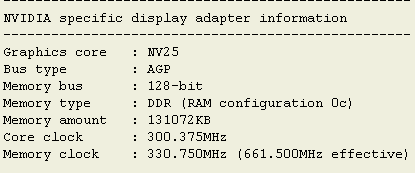The System
System setup and overclocking notes
- Intel Pentium 4 2.4GHz 'Northwood'
- ABIT TH7-II RAID I850 'Tehama' Motherboard (38 BIOS)
- 256MB PC800 Samsung PC800 RAMBUS RIMMS (2 x 128MB)
- Thermal Take Volcano S478 cooler
- MSI G4Ti4600-VTD at 300/660 MHz
- Leadtek Geforce3 Ti 500 at 240/500 (stock speeds)
- 2x120GB Western Digital 120JB hard drive with 8MB cache, 7200rpm
- Liteon 32x12x40 CDRW
- Liteon 16x DVD
- Samcheer 420w PSU
- 21" Sony G500 FD monitor
Software
- Windows XP Professional Build 2600.xpclient.010817-1148
- NVIDIA Detonator XP 28.32 drivers
- 3DMark 2000
- 3DMark 2001SE
- Vulpine GLMark
- Serious Sam 2 Demo
- Comanche 4 Benchmark
- Quake 3 v1.30
All benchmarks were conducted with vertical sync' disabled. Benchmarks were run 3 times consecutively, an average score was taken. The host system was configured for maximum performance. A fresh installation of Windows XP was used in both instances.
We've chosen to pair up our two cards with, at the time of writing, arguably the most potent host CPU / memory combination currently available. It's only just that a top-end card should be benchmarked with other cutting-edge components.
Much like the Creative Ti 4600, the MSI Ti 4600 runs slightly faster than the specified clock speeds. Here is a shot from Riva Tuner, our low-level overclocking utility.

We've gained ever so slightly on the GPU clock and gained around 11.5MHz over the specified memory speed. It seems as if factory overclocking is becoming more accepted nowadays.
Overclocking
With a video card already as fast as the Ti4600, there seems to be little point in overclocking the card. Still, even if it is just from a curiosity point of view, we were intrigued to see what it could do.
We tested the core by running the high dragothic test contained within 3DMark 2001SE. It's heavily GPU taxing, and is considered to be an excellent test for gauging potential GPU overclockability. Using Riva Tuner, we raised the GPU core speed from 300MHz in 5MHz increments and ran the dragothic test 5 times in a row to ensure basic stability. We arrived at a very stable speed of 320MHz core. 325MHz core would require the help of additional fans to be relatively stable.
We ran the lobby tests to check for memory overclockability. This time we started off at 700MHz memory (DDR) and raised the speeds in 10MHz increments. We found 735MHz to be the ideal, overclocked speed. Therefore, our stable, overclocked speeds are reflected by 320MHz / 735MHz clocks. Even at 735MHz memory speed, the RAM was warm but not burning to the touch, we're not sure how beneficial extra heatsinks would have been. Perhaps it was wise not to include them and save on costs. We're sure that the overclocking potential will improve as yields slowly become better.









